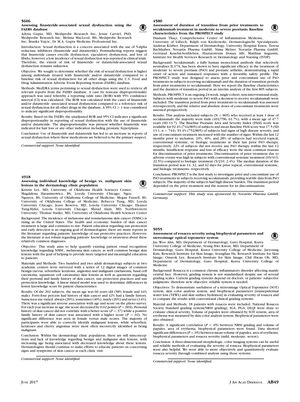Assessing Finasteride-Associated Sexual Dysfunction Using the FAERS Database
May 2017
in “
Journal of The American Academy of Dermatology
”

TLDR Finasteride and dutasteride increase sexual dysfunction reports.
The first article titled "Assessing finasteride-associated sexual dysfunction using the FAERS database" from 2017 aimed to determine whether the risk of sexual dysfunction is higher among individuals treated with finasteride and/or dutasteride compared to a baseline risk of sexual dysfunction for all other drugs using the U.S. Food and Drug Administration Adverse Event Reporting System (FAERS) database. The study found that the use of finasteride and dutasteride has led to an increase in reports of sexual dysfunction where these medications are believed to be the primary suspect. The second article titled "Assessing individual knowledge of benign vs. malignant skin lesions in the dermatology clinic population" aimed to help quantify existing patient visual recognition knowledge regarding nonmelanoma skin cancer (NMSC), melanoma skin cancer, as well common benign skin lesions with the goal of helping to provide more targeted and meaningful education to patients. The study found that within the dermatology clinic population, there are still misconceptions and lack of knowledge regarding benign and malignant skin lesions, with increasing age being associated with decreased knowledge about these lesions. Dermatologists should continue to make efforts to educate patients on concerning signs and symptoms of skin cancer at each clinic visit. The other two articles titled "Assessment of duration of transition from prior treatments to secukinumab treatment in moderate to severe psoriasis: Baseline characteristics from the PROSPECT study" and "Assessment of rosacea severity using biophysical parameters and stereoimage optical topometer system" respectively, focused on assessing the duration of transition from prior treatments to secukinumab treatment in moderate to severe psoriasis and demonstrating the usefulness of a stereoimage Optical Topometer (SOT) system, skin color analysis system, and biophysical parameters evaluating severity of rosacea and to compare the results with conventional clinical grading systems.